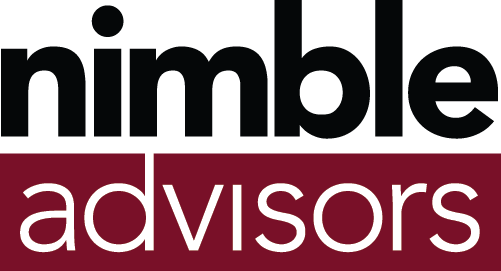How to Boost Employee Retention During Open Enrollment in 2025
A Missed Opportunity Hiding in Open Enrollment
Every fall, business leaders across the U.S. open their inboxes to the same flood: renewal reminders, insurance quotes, and messages from brokers. It’s Open Enrollment season — that window when companies choose their group health plans for the year ahead.
Most leaders approach it like a math problem. How do we keep costs down this year?
But there’s another, more powerful question that too often gets missed:
“How can our benefits help us keep our best people?”
Because benefits aren’t just a financial decision. They’re one of the clearest signals of how much leadership values its team. And when employees feel that support, they stay longer, perform better, and trust leadership more.
The Hidden Link Between Benefits and Employee Retention
For small and mid-sized businesses, turnover is expensive. Replacing a good employee takes far more time and money than most leaders realize. But what drives that turnover isn’t always pay — it’s perception.
When employees see benefits shrinking, coverage changing without notice, or communication lacking, they often interpret it as a sign that leadership is cutting corners. That’s when disengagement starts.
We’ve seen a consistent pattern across the board: employees value benefits as one of the main reasons they stay, but many leaders still see them mostly as an expense. That disconnect quietly drives turnover.
The truth: employees don’t just stay for a paycheck. They stay where they feel supported.
What Employees Actually Notice About Benefits
Leaders often assume benefits are complicated or that employees barely use them. But employees notice far more than we think.
They notice when:
Deductibles quietly climb each year.
Their preferred doctor or therapist drops off the network.
Leadership announces changes without explanation.
Those moments, while small, shape long-term trust. Because benefits touch people at some of their most vulnerable points — when they’re sick, stressed, or caring for family. If the system fails them then, it’s not just a financial frustration. It’s emotional.
When benefits feel confusing, inconsistent, or unfair, employees don’t just question the insurance provider; they question leadership’s priorities.
Make sure you’re avoiding these 5 mistakes around payroll and benefits.
Three Questions Every Leader Should Ask This Season
October through early January is more than a compliance window. It’s a chance to reset expectations.
Here’s what Open Enrollment really represents for leaders:
A trust checkpoint: Are we transparent about changes and trade-offs?
A values test: Do our benefits align with how we say we treat our people?
A retention lever: Are we offering something that helps us keep our best performers?
When those questions guide decisions, the insurance process shifts from “buying coverage” to building culture.
The Real ROI of Retention-Focused Benefits
Think about what it really takes to replace a strong employee: the time, training, and lost momentum. It’s always more expensive than it looks on paper.
Now multiply that by several employees leaving each year due to frustration with benefits, scheduling, or communication. Suddenly, that “cost-saving” plan looks a lot more expensive.
Leaders who invest in coverage that truly fits their people see:
Reduced turnover. Lower replacement costs and more continuity.
Higher engagement. Employees who feel valued work with more ownership.
Stronger culture. A shared sense that leadership “gets it.”
Even modest benefit improvements — like better preventive care or mental health coverage — can deliver exponential returns when measured in retention, morale, and performance.
How to Rethink Benefits This Open Enrollment
If you’re heading into plan discussions this month, here’s a process that helps shift from cost cutting to value building.
1. Start with people, not plans.
Before reviewing quotes, gather input. What’s frustrating employees about their current plan? What benefits do they actually use? You can get more insight from a five-question survey than a 50-page plan summary.
2. Define “fit” before “affordability.”
Ask: Does this plan match our team’s life stage, income, and health habits? A young, part-time workforce might need flexibility and urgent-care access. A team of working parents might prioritize predictable family coverage.
3. Focus on total cost of care.
Premiums are just one piece. Out-of-pocket costs, deductibles, and copays can hurt morale if they rise faster than wages.
4. Communicate with context.
Even if you can’t make major upgrades, clarity matters. Explain why certain trade-offs were made. Employees will respect honesty far more than silence.
5. Measure impact.
Track turnover and engagement after benefits changes. If satisfaction improves, highlight it internally — it reinforces the connection between leadership decisions and employee well-being.
Building a Culture of Care
At Nimble, we see Open Enrollment as a leadership exercise. It’s not about choosing the perfect insurance plan… it’s about showing up with intention.
The leaders who approach this season thoughtfully send a powerful message:
“We see you. We’re listening. And we’re investing in your well-being.”
That message builds cultures that retain people and provides a sense of respect. Not through perks or slogans, but through the practical things that make life easier and more secure.
Takeaway: Don’t Just Shop for Savings — Shop for Retention
As you review your options this fall, remember: cost control and retention aren’t opposites. They’re connected.
The real measure of a good health plan isn’t just what it costs your company. It’s how it makes your employees feel about working there.
So before signing that renewal, pause and ask:
Will this plan help us save money?
Or will it help us keep our people?
Because over the long term, the second answer is always the better investment.
Let’s find you the right group health insurance plan so you know you’re on the right track. Schedule your call to start 2026 off strong.
-
Track patterns in turnover, employee surveys, and informal feedback during and after Open Enrollment. If people frequently cite benefits as confusing, expensive, or unpredictable, it’s a sign your package may be undermining retention rather than supporting it.
-
Unexpected costs — like rising deductibles, shrinking networks, or unclear plan changes — are the most common triggers. Employees feel blindsided, and that loss of trust often pushes them to consider other opportunities.
-
Transparency and communication often matter just as much as the plan itself. Explaining trade-offs, offering decision support tools, and giving employees clearer guidance can meaningfully improve satisfaction without increasing premiums.
-
Ask about total cost of care (not just premiums), network stability, historical deductible changes, and which plan elements matter most to your employee demographic. The right questions reveal whether your renewal supports retention or simply maintains the status quo.
-
Start by understanding the life stages and priorities of your workforce — parents, early-career employees, part-timers, or older workers each value different features. Matching your plan to those realities creates a package that feels intentional and keeps people engaged.

